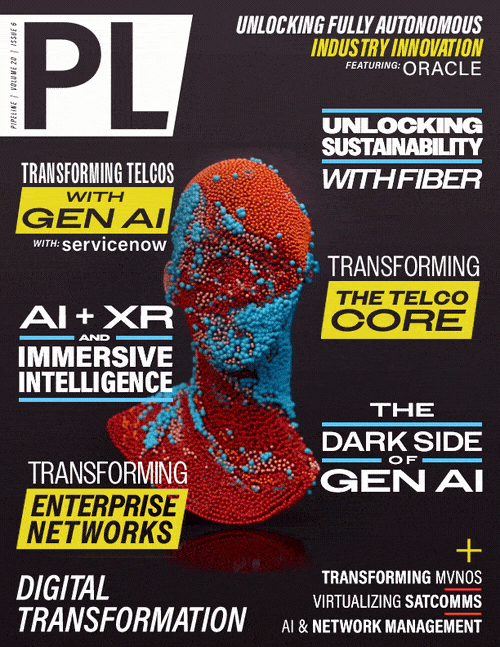Gen AI and Automation's Impact
on Telco Transformation
By: Rohit Batra

Over the past few years, Communications Service Providers (CSPs) have battled increased competition, macro challenges, and rising operational costs. At the same time, disconnected and disparate legacy systems with complex processes have negatively impacted customer satisfaction and burdened day-to-day operations for CSPs, making adapting to challenges much more difficult.
As CSPs face competition and the many other challenges set before them, they need solutions that help them achieve their goals and increase customer loyalty, while at the same time mitigating risk. They’re leaning into automation, AI, and generative AI to streamline the end-to-end service experience, starting with planning and building networks, all the way through to selling services, and providing ongoing customer support.
The AI Opportunity
2024 is set to be a breakout year for CSPs on their generative AI journey. Research from NVIDIA found that telcos are rapidly adopting AI and generative AI for a variety of business needs. In fact, “31 percent of respondents said they invested in at least six AI use cases in 2023, while 40 percent are planning to scale to six or more use cases in 2024.”
CSPs are ready to implement generative AI and implement fast, and that’s with good reason. McKinsey found that CSPs around the world have started implementing generative AI and are already seeing double-digit percentage impact. CSPs at the forefront of this movement will regain growth and capture significant market share while seeing massive productivity gains, according to the report.
Let’s see how this comes to life across the end-to-end service lifecycle, using generative AI for simplified experiences, improved productivity, and supercharged growth.
Stage 1: Planning, building, and monetizing networks
Planning, building, and monetizing networks remains a top priority for CSPs today, and the starting point for any service. Fragmented networks, rising customer expectations and demand for new
services create an immediate need for AI and automation. Automation is already helping CSPs better understand their network inventory, including where to innovate and expand to deliver the
service that customers expect.
With AI and generative AI, CSPs can improve the network planning and design process, accelerating time-to-market while mitigating the risk of human error. Imagine how much
faster and efficiently a new network could be created and designed if a network engineer could ask generative AI to design it based on capacity demands and existing infrastructure. The agent
could tell a generative AI-powered chatbot, in natural language, the topology, throughput, and bandwidth requirements needed. The chatbot could then recommend the optimal network design, with
human oversight at every step of the way.
Stage 2: Sales and order fulfillment
Once the network is built, CSPs need to be able to launch products and fulfill orders fast. But fulfilling a telco order is a complex and manual process requiring multiple steps, systems, and teams.
Imagine how much faster and efficiently a product could be launched if an order fulfillment agent could ask a generative AI tool: “What tasks do I need to create for this order?”
Generative AI could build a roadmap of the tasks needed to fulfill the order that recommends what to do when. Of course, an agent is in the loop the entire time with the ability to edit and adjust the plan, but it’s a lot easier and faster to start from a draft order orchestration task list than building one from scratch.
Simply put, generative AI can streamline order orchestration and eliminate manual work to accelerate time to market. Delivering orders fast and accurately increases customer satisfaction.
Stage 3: Customer, partner, and agent experiences
After a product or service is sold, maintaining the customer relationship is absolutely critical. Across every industry, customer expectations for fast, easy service are rising. Meeting these expectations can determine whether customers leave or new ones are gained. According to new research, 69 percent of customers will switch brands because of a poor customer service experience while 84 percent of customers are likely to recommend a brand based on great customer service.



















